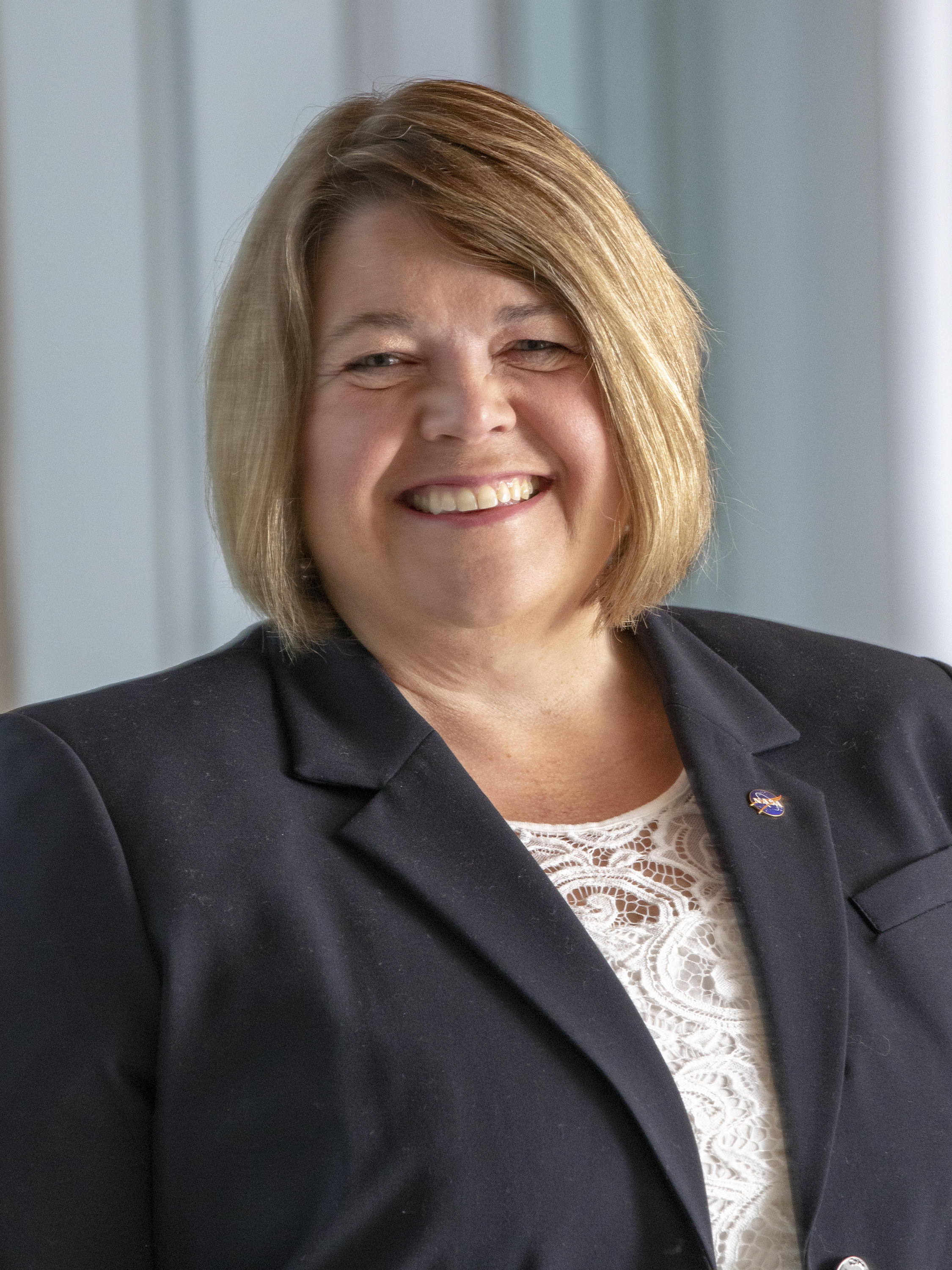Behind the business of NASA’s digital transformation

Joe Raedle/Getty Images
The space agency’s digital transformation officer talks about how a focus on business outcomes is helping NASA pivot its enterprise technology goals toward the future.
Perhaps more than any other agency’s, NASA’s history is shaped by technological innovation. At a time when the federal government is pursuing new methods to modernize its digital infrastructure, it falls to Jill Marlowe to help align the space agency’s diverse mission sets toward a future that is data-fueled, interoperable and powered by emerging technology.
As NASA’s digital transformation officer, Marlowe is tasked with overseeing its Enterprise Digital Transformation, a strategic initiative launched in December 2020 to help shape what the agency’s information technology environment will look like in the future and how it will best serve a wide-ranging portfolio of business outcomes.
In an interview (edited here for length and clarity), Marlowe spoke about the initiative and where NASA is headed next.
NASA’s approach to digital transformation evolved over a number of years, dating back to strategies and frameworks from 2018 and 2019 and the enterprise initiative that launched in late 2020. Can you talk about the plan itself and where things sit right now, nearly three years after that launch?
In 2018, there was a study team — now I refer to that as the pre-formulation phase — where they were doing a big scan across NASA to see where we were with digital transformation: What did we need to do and did we actually even need to have an enterprise-level approach for it?
Basically, what they found from that period is that … the soul of technologists [is] alive and well at NASA. That's not a shock. We've been discovering the universe through technology from our inception. What they found is that there were a lot of [digital transformation] efforts scattered all across NASA. The problem was that budgets weren't allowing people to really take it much past experimentation, and there was a lot of duplication.
The job that I got in October 2020 was a very technology-centric approach to digital transformation. They basically said, "Hey, here's six areas where we're seeing a lot of duplication, and we think that maybe by coordinating our efforts better, we can make more progress."
The first thing I did was become a student of digital transformation, and one of the very daunting statistics is the failure rate of digital transformation efforts. One of the things that really stuck during that benchmarking was that technology-driven digital transformation efforts often implode because they become very focused on the solutions themselves and they lose traceability to the business objectives that we really want to be going after.
So how does the Enterprise Digital Transformation program work?
It's not actually a program. It's what we call a strategic initiative. “Program” implies, at least at NASA, that there's a big, centralized budget with crisp, time-marked deliverables. A strategic initiative is there to spark progress and move a body of folks and work across NASA toward a strategic direction. And that's what we're trying to do with digital transformation — not centralize all of it, but actually start to accelerate and enable the efforts of many across NASA. And that would be many programs. A lot of programs are investing in it.

What we found — and what's now been codified into our strategy — is that there were four areas that senior leaders really were needing to push on, and [we] said, "Hey, the next NASA needs to be different."
What are those transformation targets and how do you approach applying digital transformation to each?
The first one is how we do engineering. It's now marked by a very diverse partnership landscape with a lot of investment that's coming from outside of NASA. We've seen that in the private sector, and we need to be a whole lot more agile and we need to be delivering systems and missions that are going to look a whole lot more complex than the ones of the past. The Artemis mission and the complexity with international partners and the private sector is one of the examples of what that might look like.
Discovery [the second area] is everything from scientific discovery to discovery of the foundational physics for some of those complex missions to early-stage technology invention. And that's an area where we recognize there's a lot more investment outside of NASA that really could be propelling aerospace, like in the digital sector, than inside of NASA.
The third area is all around transforming decision-making. That one has at its roots a whole lot more speed to make decisions faster and evidence-based.
And the fourth area is business operations. You've seen a lot of movement inside of NASA over the last several years with what we refer to as our map initiative moving in this direction. But that's really eliminating the friction that's under the hood between all of the business processes. And by that I mean things like how we move money around, how we acquire our talent, how we develop our talent, how we do procurements, how we get partnership agreements in place, all of that sort of stuff.
How does the initiative guide action from agency stakeholders on those targets?
As of about last December, we got consensus on some near-term priorities that we think we need to focus on. The scope of the near-term priorities ended up being the same for each of the four areas.
The first one, the priority was all around data. We have to get our data house in order — [we need] a lot of strong tenets around data governance. The second one was around architectures, which feeds the first one. Are we really providing the right environments for people to be able to do that work together? And can we start to look at some consolidation [and] integration — especially themes of interoperability, where work streams need to be able to collaborate together and with our outside partners? And then the third area was all around fundamentally transforming our processes and our tools, making a proactive effort to get away from some of those paper-centric processes that still are persisting toward more data- and model-centric processes. And then [we’re] looking at the tools that we need to be focused on to support that.
That's where we are right now: We've laid in those roadmaps and we've laid in those priorities. And as of about March, we had all of the organizations reply back to us.
We've just gotten all of that data back from them on what they're planning to do and finished a racking and stacking of that information to say, OK, are we going to make progress on the things we agreed were priorities? And if not, are we OK with that? We're integrating all of that data now and integrating it back with our Office of the Chief Information Officer, our IT roadmaps for the services that we need to provide.
Unstructured data and interoperability are problems for a lot of agencies. Then there's implementing the processes and tools. How do you get everybody coordinated? How do you get the conversations going to where people can get on the same page?
A couple of things. I heard a quip a while ago — every now and again these little things stick in your brain, like earworms. The one that I'm thinking of is “the tone at the top, the mood in the middle and the buzz at the bottom.” We try to take a concerted effort thinking about the various layers throughout the organization.
Strategically, that tone at the top, we're trying to have these roadmaps and these transformation targets truly owned by the organizations that are performing that work. We serve as a facilitator to help them create that vision of the future, educate them and integrate them with our IT professionals who can help them build out some of those digital action plans. But at the end of the day, it's all about ownership. It's not anybody telling them, “Here's how you have to digitally transform or what you need to do,” but it's their vision. That's the first thing.
The buzz at the bottom — we sponsor multiple communities of practice. We have six foundations within our digital transformation initiative. They're centered around the next technologies that we think NASA really needs to focus on adopting. We get the early adopters in each of those areas across NASA to help celebrate what they're doing, expose the lessons learned and give them a voice in the process.
One of the debates around digital transformation often heard in Congress is about return on investment. Does NASA’s approach, starting with business outcomes, get you to those guideposts earlier in terms of how IT modernization and digital transformation are working?
I don't want to come off like I'm the expert and I know exactly how to do digital transformation. I am on a learning journey. I constantly am collaborating with colleagues across industry, across other federal agencies. And we all are in the same place in terms of really trying to figure out how do we calculate ROI [and] communicate ROI in an environment that is very cost-focused? That's obviously a big pressure and oftentimes [people have] very short attention spans. People want to have almost instantaneous returns on this.
The truth is we're talking about a fundamental shift. We're at that next pivot … and we know we need to show progress along the way. But the larger conversation is about how do you get that mindset that we're really talking about a fundamental transformation of the business outcomes that we're collectively trying to deliver? So it's less about an optimization of the way we're working now, where you maybe could get at some of those quick metrics, and more about how we are actually transforming the value that we're delivering to the American public.
NEXT STORY: Can NIH help drive health data access?



